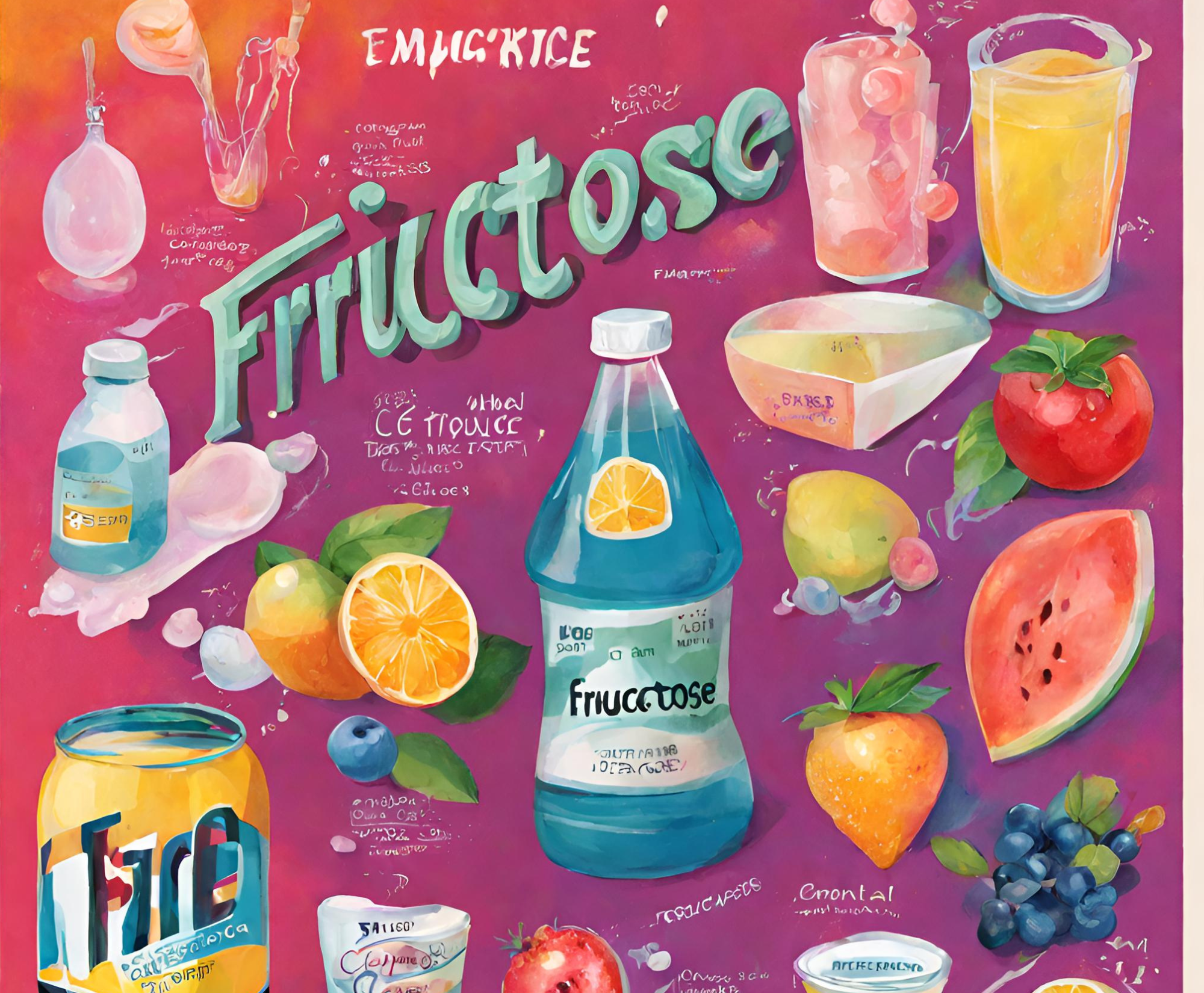Those who followed premium training on fruit and fructose in the Mediterranean diet and more generally in the Blue Zonesalready know that fructose - a sugar naturally found in fruit and honey - follows a very specific metabolic pathway.
This makes fructose a natural but potentially dangerous sugar. when supplied in excess. So, in response to a very popular issue among fruit consumers, here's our ultimate ranking of the 10 best fruits for health, weight loss, maintaining good health markers and longevity.
This classification is based on criteria that are both compatible with the Mediterranean diet centred around a balance between taste pleasure and a diversity of relatively healthy products, and the low-carb dietA more fundamental approach, more focused on efficiency and restoring optimal health.
This free content complements the premium chapter dedicated to fruit and fructose in the Mediterranean diet, that reveals all the well-kept secrets of fruitHow to consume them, in what context, in what quantities, and which ones to choose according to each individual's objectives and lifestyle.
A quick reminder about fructose
As a reminder, fructose - the fruit sugar - is processed almost entirely in the body by the liver.
This content is part of the guide Blooness, the guide to the ideal human diet, the summary of which you can find here 🌱🥑
Conversely, glucose, which is the main source of energy in the standard diet via carbohydratesThey are found in both sweet foods - such as table sugar - and savoury foods, such as wheat starch, is processed by most of the body's cells for energy purposes.
Part of the incoming glucose is thus used directly as an energy source by various tissues and organsIn addition to being stored by the liver as hepatic glycogen (around 100-120 g), it is also stored as muscle glycogen for later use.
French-speaking subscribers will receive the newsletter in French, and all others will receive an English version.
It is estimated that liver glycogen can be used to maintain blood glucose levels for a few hours, generally between 12 and 24 hours. Liver glycogen is used primarily between meals, while muscle glycogen is used during physical activity.
Finally, once stocks have been replenished, excess ingested glucose can be converted into fatsThe level of fat storage depends on an individual's overall energy status, their level of sedentary activity, whether they take part in strenuous sports or not, etc. But that's another subject to which we'll return in an entirely dedicated chapter.
So the main difference between fructose and glucose is that fructose is almost entirely metabolized by the liver and cannot really be used as such by the body's cellswhile glucose is used directly by the cells from the body at various points to produce energy (ATP) through a process called glycolysis, in addition to the little glucose that the liver can store in the form of glycogen.
The liver, a central organ to take care of
The liver is a key organ that influences a large number of physiological processes, including blood composition, toxin elimination, storage of energy and the production of food. vitamins and mineralsbile production, etc...
And the fact of centralizing fructose metabolism within it, in the event that this fructose is ingested in excess, on a regular basis, and does not respect the liver's chronobiological rhythmIn fact, to oversimplify things, it adds to the workload of an already busy liver. Put more anthropologically, the liver would not have adapted over the centuries to such massive intakes of fructose as we consume today.
Just a reminder, the liver manufactures hepatic glycogeni.e. from the glucose and fructose ingested, thatit transforms it into an energy reserve called glycogenThis is energy that can be released at any time if needed, particularly for the brain. For example, at night, when you're asleep and no longer taking in food, the liver releases glucose from hepatic glycogen - this is glycogenolysis - to maintain blood sugar levels and provide energy for the body's vital functions.
The problem arises when glucose and fructose levels are high, immediate energy needs are met, and liver glycogen levels are full, the liver then converts the excess glucose and fructose into fatty acids in a process known as lipogenesis.
And these fatty acids produced by lipogenesis in the liver are transported to adipose tissue (body fat, basically), where they are combined with glycerol to form triglycerides, which are the main form of fat storageThese are also a source of energy for the body. In fact, this source of energy, produced from glucose or fructose, is said to have enabled mankind to survive periods of famine.
On the other hand, what was once a godsend has now become a poisoned gift, because if we consume glucose and fructose in excess, two major problems can arise:
- the first, is the increase in body fatwhich, when they become too large, lead to a whole host of health problems;
- the second, the phenomenon of insulin resistancewhich means that the cells of the liver, but also those of the pancreas and other organs, are no longer able to take in the glucose circulating within them in order to burn it, because they no longer respond to the hormone insulin, because - to put it simply - they have been overexposed to it. insulin and they've already had too much sugar to metabolize. So the pancreas will produce excess insulin to force the sugar into the cells, sometimes to no avail.
In both cases, this leads to an increase in blood glucose (blood sugar level), circulating glucose can no longer be metabolized, leading to health problems such as heart disease, type 2 diabetes and other metabolic disorders.
The problem of excess fructose
Finally, the third problem linked specifically to fructose is that, unlike glucose, fructose cannot be metabolized directly by the body and must pass through the liver, which in the case of high consumption amplifies the problem of an overloaded liver.
As the liver converts some of this fructose into fatty acids, it will be all the more likely to store these fatty acids as hepatic fat, i.e. fat stored in and around the liver, which in turn contributes over time to one of the most symptomatic diseases of the modern era: non-alcoholic fatty liver disease (also known as fatty liver disease or soda disease), which is in other words excessive accumulation of fat in the liverwhich has dramatic consequences for general health.
This is why, as a precautionary measure, more and more people are speaking out against excessive glucose consumption, but also fructose, which has the unfortunate tendency to make the liver fatty and resistant to insulinwhen consumed in excess.
And in modern food, fructose comes from eating too much fruit, which is often very sweetThis is because they have been selected over time to be sweeter in the eyes of the consumer, consumption coupled with fructose from processed foodsfound in soft drinks, for example.

If we take the example of an individual who consumes orange juice, a bar of cereals with dried fruit, one or two soft drinks, and table sugar with tea or coffee, this individual could very quickly reach at least 50 grams of fructosewhich is already a lot. As a reminder, WHO recommends 25 grams of fructose daily for an average person consuming 2,000 kcal per day...
Not to mention those who practice dieting. ketogenicand for whom a combination of large quantities of fats and sugars would be counter-productive for their metabolism, since it would prevent them from burning fat, and they would immediately store this double supply of energy, while disrupting their metabolism since they would be at the crossroads of two fuels.
So how to moderate your fructose intake while continuing to enjoy the fruits when you love their delicious taste? Simply by choosing fruits that are low in sugars, and particularly low in fructose, whenever possible, without necessarily making it a year-round rule.
Beware of total fructose content!
As we saw in the chapter dedicated to fructoseMost nutritional tables show the amount of fructose in a food on one side, and the amount of sucrose on the other. However, sucrose is a disaccharide made up of glucose and fructose. Consequently, if a food contains both sucrose and fructose, part of the fructose will come from sucrose once in the body. To estimate the fructose content of a food, we can therefore consider that the total fructose contained in this food is equal to the initial fructose to which we add half the sucrose!
For example, grapefruit is a priori low in carbohydrates, and very low in fructose (1.77g per 100g of food), but it also contains sucrose (3.51g per 100g), half of which is fructose. We can therefore conclude that grapefruit contains approximately 3.53g of fructose and not 1.77g as advertised on nutritional tables.
Even if the difference isn't abysmal either, it remains important and should be taken into account, especially if you want to consume this fruit in significant quantities, for example in juice form, or add it to a recipe for a ketogenic diet.
And to draw up our top 10 healthiest fruitsin our case fruits lower in sugar and fructose in order to spare the liver, we have taken care to take this criterion into account and announce total fructose contentand not just in initial fructose, which is particularly useful if you like to eat fruit but don't want to be left out. you want to optimize your healthThis is especially important if you have a liver condition.
What's more, these fruits - just like very sweet fruits for that matter - also benefit from fibersThey are rich in vitamins and polyphenols, which are highly beneficial to the body, and are best eaten whole rather than in juice.
Top 10 fruits for health, figure and longevity
In our top 10 fruits for health and the liver (with their fructose content per 100g), we find :
- Berries (strawberries, blueberries, blackberries, redcurrants, raspberries, cranberries): around 3 g fructose. If we had to choose just one fruit family, it would be these, because in addition to their very low sugar content and their low propensity to make the consumer addictive, they benefit from antioxidant properties and are compatible with the Mediterranean diet and the ketogenic diet.
- Grapefruit: about 4 g of fructose
- Apricot: about 4 g of fructose
- Peach: about 4 g of fructose
- Watermelon: about 5 g of fructose
- Orange: about 5 g of fructose
- Kiwifruit: about 5 g of fructose
- Apple: about 7 g of fructose
- Pear: about 7 g of fructose
- Melon: about 7 g of fructose
And the fruits that are "out of the running" because they contain little or no sugar and have no real sweet taste include some of the fruits with the lowest sugar content which are particularly popular with practitioners of the ketogenic diet:
- The olive (0.3g of sugars per 100g)
- The lawyer (0.83g of sugars per 100g of food)
- Lemon (3g of sugars per 100g of food)
- Coconut (6.22g of sugars per 100g)
The most important sources of fructose are honey, dates, raisins and figs, which should be consumed in moderation and, if possible, with some physical activity.
From now on, you'll know which fruits to choose when you feel like indulging in a sweet treat in front of your favorite TV series.
As for the best way to consume them, in what context, in what quantities and which ones to choose according to your objectives, your lifestyle and the type of diet you choose, go to premium content dedicated to fruit in the Mediterranean dietThe fruit and sugars section will help you adapt your intake of fruit and sugars in general, so as to get the best out of them for your figure and your health, while avoiding the harmful effects.
Next chapter: Reminders on protein intake (from Tome 1 of Nutrition Basics) - [MEMBERS AREA] [ZONE MEMBRES] [ZONE MEMBRES] [ZONE MEMBRES] [ZONE MEMBRES] [ZONE MEMBRES
Previous chapter: The question of fruit in the Mediterranean diet - [MEMBER ZONE]

